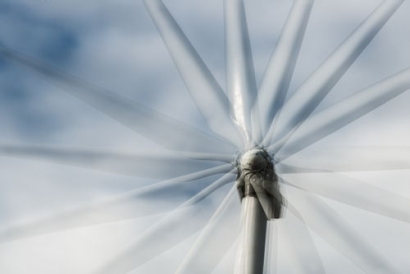
NREL is supporting distance learning for K-12 students through exciting, hands-on WfS programs such as KidWind and NEED (National Energy Education Development).
In a time of distance learning, having the ability to meaningfully engage primary- and secondary-level students on clean energy topics is an exciting prospect. “Wind energy is unique as a clean energy technology because it’s noticeable, it moves, it’s engaging visually,” Baring-Gould said. “It’s hard to get a second grader to do math, but if you can introduce STEM concepts through a fun and engaging way, it is critical.”
A Teacher’s Best Friend
Now in its 40th year, NEED has enjoyed a long, fruitful relationship with NREL. NREL has helped NEED develop insightful curriculum covering solar, wind, hydropower energy, and more. Funding from NREL helps Wind for Schools develop and disseminate these innovative resources to teachers in the classroom.
Designed to aid teachers—who may or may not have a background in science—in exploring topics in energy with their students, these unique programs offer vetted classroom resources and curricula for teachers, all available for free download. Written by teachers for teachers, and updated annually, these curricula also conform to state educational standards.
In addition to offering innovative teaching tools, NEED provides professional development for teachers, “NEED helps teachers get content, get comfortable teaching the topics, and gives them lessons they know will work in the classroom so that they don’t have to reinvent the wheel,” said Rebecca Lamb, program director at NEED.
And NEED is moving some of these popular professional development opportunities online.
“It’s sometimes hard to wrap your head around how to do hands-on lessons online in an engaging way, but we have a great group working on that,” Lamb said.
The KidWind project has also had to shift from a packed schedule of in-person student and teacher training efforts and large-scale events, such as the National KidWind Challenge, into online forums.
The Online Challenge engages students from across the country, and the expanded KidWind Giveaway is designed to get materials into the hands of students working from home. KidWind and the NREL OpenEI Wind for Schools Curricula platform are also great sources of online curricula to inspire students, teachers, and caregivers.
Educating in New Learning Landscapes
To say that the adoption of distance learning has altered the learning landscape is an understatement.
“We went from a model where teachers were in classrooms with students and knew what their day-to-day would look like, to students being home, teachers being home, and connecting digitally and with packets of paper,” Lamb said.
Over the past few months, NEED has redirected its focus to rise to the challenge of distance learning.
“NEED has shifted and tried to support teachers in this new learning environment,” Lamb said. “As an organization, we focus our efforts on making sure teachers have what they need and have productive ways to teach about energy.”
Part of this shift involved thinking of ways to bridge the lack of opportunities for hands-on interaction between teachers and students during distance learning, as well as understanding the challenges faced by parents now filling the role of impromptu educators.
NEED noticed that parents were coming to their website searching for activities for their children where the parent would not need to teach the bulk of the content, but rather could supervise their children as they followed along with a lesson. To fulfill this growing demand, NEED created content for unconventional channels such as Instagram.
The wildly popular Instagram Live seriesPDF was developed by NEED’s teacher advisory board and student advisory board.
The hands-on lessons allow students to follow along in real time or watch later via Facebook or YouTube. Classes engage students with fun activities, introducing them to wind energy in ways that would be otherwise impossible to do outside the formal classroom.
In April, NEED offered several of these Instagram Live lessons, teaching clean energy concepts using materials found around the home. For example, in a class geared toward children in 4th–8th grades, students were guided in building an anemometer. Using paper cups, some pins, clear tape, and a few other household items, students constructed working instruments to measure wind speed.
And NEED is not stopping at Instagram fame: The organization is currently developing a video series for teachers to use in the classroom—both virtual and brick-and-mortar. These videos take the guesswork out of finding high-quality content online, serving teachers’ and students’ needs both now and when they return to the classroom.
The Wind for Schools programs will continue to offer new and innovative resources for teachers, parents, and students as they navigate the distance learning divide.
Learn more about these programs by visiting:

